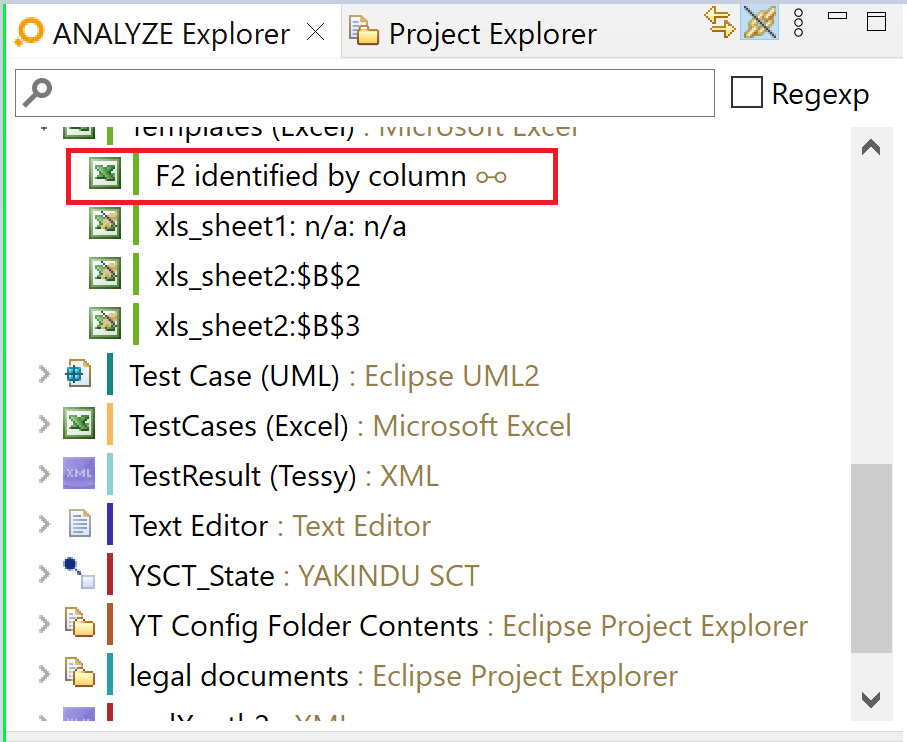Table of contents
N release, milestone 1 (NM1 1.1.1939) Copy link to clipboard
Sophisticated distinction of validations Copy link to clipboard
We moved several parts of our Suspicious Links validation into a separate validation, the Model Consistency validation. The reason for this step is that these parts of the validation are often much faster to execute. Thus, splitting them apart from the more expensive parts has the advantage that they can be executed in situations where not much time is available, while a complete validation is not necessary.
Now the Suspicious Links validation only checks whether the links have been changed, which can take very long for some adapters. While the Model Consistency validation contains by far more checks, they typically don’t require that much effort.

You might have noticed that these two validations had been separate before and have been merged into the Suspicious Links validation in LM1 for usability reasons. In order to keep the improved usability, we added a new menu option to execute all three validations that are related to links. These are the validations for Suspicious Links, Model Consistency, and Duplicate Links.
Improved usability for report creation Copy link to clipboard
When generating reports based on the traceability model, you usually want the model to be consistent, such that you can trust the results that are contained in the report. For this reason, it is advisable to execute at least some of our validations. However, you might have to wait very long for the validation results, before you can start the report generation. Also, you might just forget to execute the validations at all.

To improve this situation, we extended the report wizard with the option to select the validations that should be executed before generating the report. If the validation produced any errors or warnings, a dialog will ask you whether or not the report should be created anyway. Otherwise, report generation will start immediately after the validation.
We also made two minor improvements to the usability of our report generation. First, customers noticed that the button for selecting parameter values in the report wizard was hard to find. So we made it more visible. Second, there is now a progress indication for the report generation, which is visible in Eclipse’s task bar and in the Progress view.
Improvements of the YT Explorer Copy link to clipboard
When artifacts are linked to themselves (which is rather unusual), they are now decorated with a special icon. This icon is visible in both the YT Explorer and in the YT Overview. In the screenshot below, you can see this new decoration next to the artifact „SW-QTS: ASIL A”.

You can disable/enable this icon and other decorations in the Eclipse preferences ( General → Appearance → Label Decorations).
Improvements of the query language Copy link to clipboard
We extended the query function traceMatrixFor to support access to attributes (including custom attributes) of the artifacts contained in the traces that have been found by the function. This works even if you access more than one artifact at once. In this case, the attribute values of all artifacts will be combined to a comma-separated list that is stored in a string.
If these attributes are also objects with attributes, you can access those as well. This applies recursively. The above-mentioned comma-separated list will then contain the values of the final attributes that are accessed in this way. For example,
A.attr1.attr2 will result in a list that contains the values of
attr2. If
A,
attr1, and
attr2 each contain a single value, the final list will consist only of one attribute value. Note that not only can
A be a set of artifacts, but also
attr1 and
attr2.
Bug Fixes Copy link to clipboard
Fixed a bug regarding the string function "match" Copy link to clipboard
When used in the attribute mapping adapter, the match function returned the original string if the regular expression did not match. For other adapters, match returned an empty string in the same case. This is according to the keyword’s description in the help. We corrected the function’s evaluation in the attribute mapping adapter to behave like in all other adapters.
Fixed a bug that could lead to bogus name change errors Copy link to clipboard
We fixed a corner case where a QuickFix for a suspicious link issue could result in a name change error when there was actually no name change.